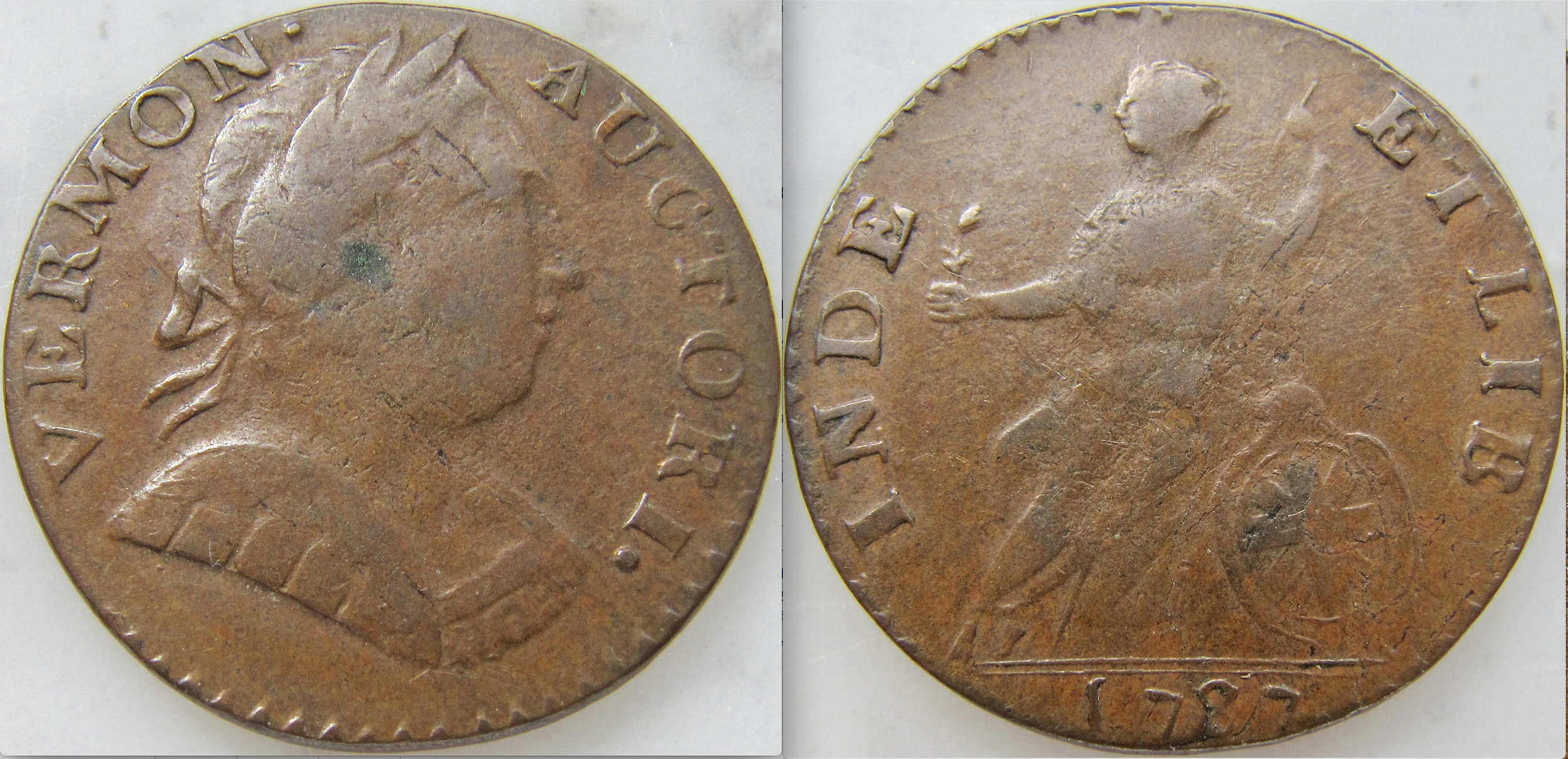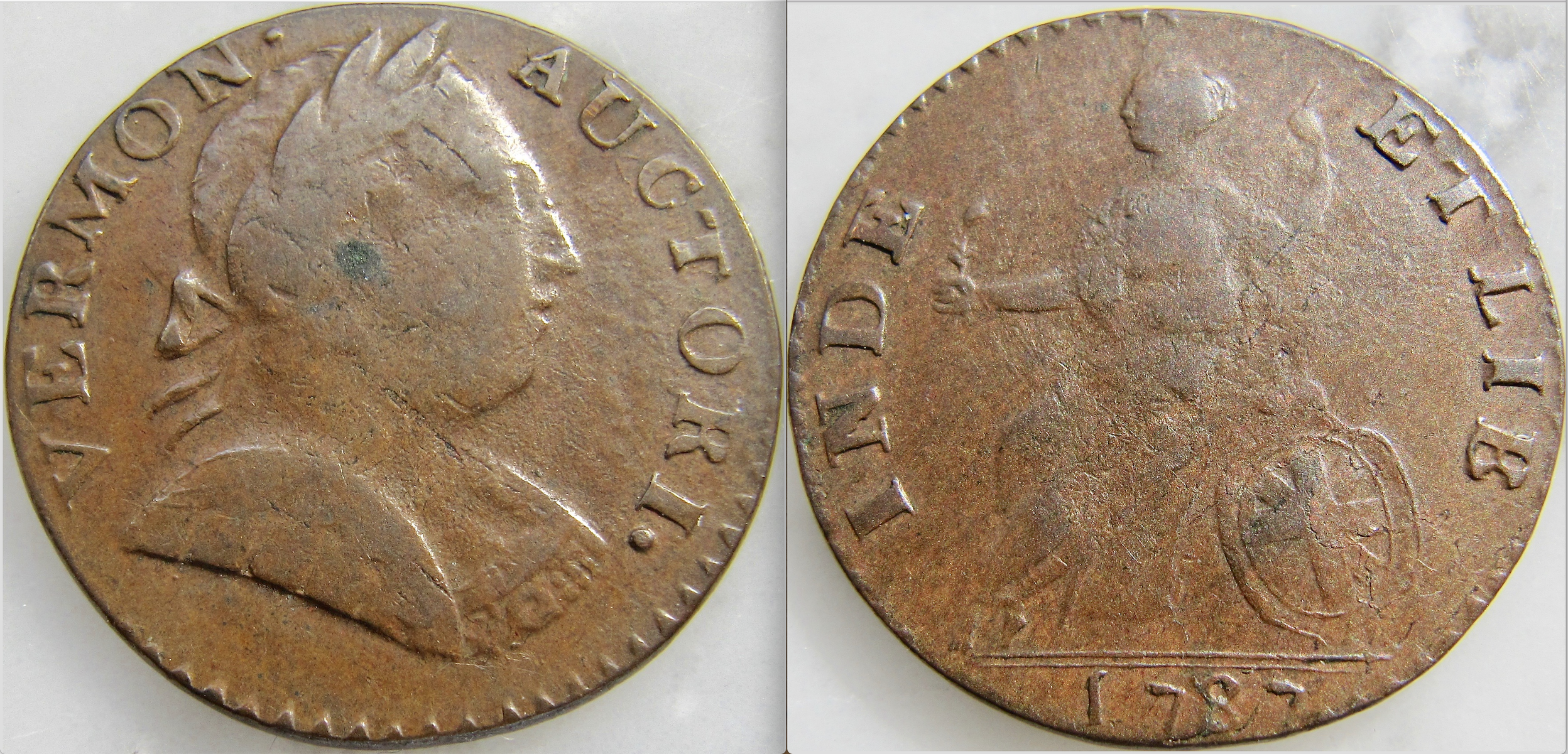The Difficulty in Grading Early American (Post Colonial) Coins: Vermont Portrait Copper
 Eddi
Posts: 568 ✭✭✭✭✭
Eddi
Posts: 568 ✭✭✭✭✭
Over the years, I have been able to add a few Colonial and Post Colonial coins to my U.S coin collection. One of the interesting (and challenging) issues with this coinage for me has been how to evaluate their condition, ie, how to grade them.
As the authors of the Whitman "Encyclopedia of of Colonial and Early American Coins" point out, the difficulty arises due to striking issues and the quality of the planchets used. They point out, for example, that due to varying striking quality, a freshly minted coin may appear to be very worn.
An example of this may be this Vermont 1787 Portrait Copper, Most design elements on the obverse and reverse appear quite weak, yet the peripheral legends appear fairly well detailed and the surfaces smooth and pleasing. How does one therefore grade such a coin?
Please, let me hear your opinions.
Thank you,


Comments
With Vermont coppers, the first thing I look at is planchet quality. If it wasn't struck on a poor planchet with strips of porous metal running through it, then it's already above average. After that, corrosion and scratches/bumps/damage factor in. Assuming the coin is free of these major defects, you're already talking about the top 10% of the existing pieces. Your particular piece has outstanding surfaces, and I would grade it VF based on the perceived wear on the portrait and the strength of the lettering. The quality of the strike doesn't influence the grade I would put on it, but it certainly could influence the value to a state copper specialist.
Very nice Vermont. Appears to have the same central weakness as the Whitman Encyclopedia plate coin. VF seems a fair grade, however TPG could go anywhere from F-EF on any given day. IMO.
I could see that piece in an XF holder.
Well, I have collected Colonial and state coinages for many years and have completely solved that problem. I just don't do it! I'll consider the color and surface qualities and how pleasing the coin is to the eye. I just don't bother with grading.
Thank you very much for your opinions.
F to XF seems quite a spread, and therein lies my difficulty: ist it wear or ist it strike?
Here is another Vermont copper, this one a "Landscape" type. A lovely type which I like very much.
Faulty planchets, as with this example, are not unusual, from what I have read.
Very nice examples; speaking of planchet flaws, my landscape has one that is an internal void, you can see a pinpoint of light looking through the coin, lol.
As others have mentioned grading Vermont colonials is a crapshoot. Almost all of them started were born on craply, defective planchets.
I would much rather own a well centered, smooth planchet example than an "uncirculated" one that looks like a crumbling cookie.
Dead Cat Waltz Exonumia
"Coin collecting for outcasts..."
1st coin VF
2nd coin F12/VG10ish